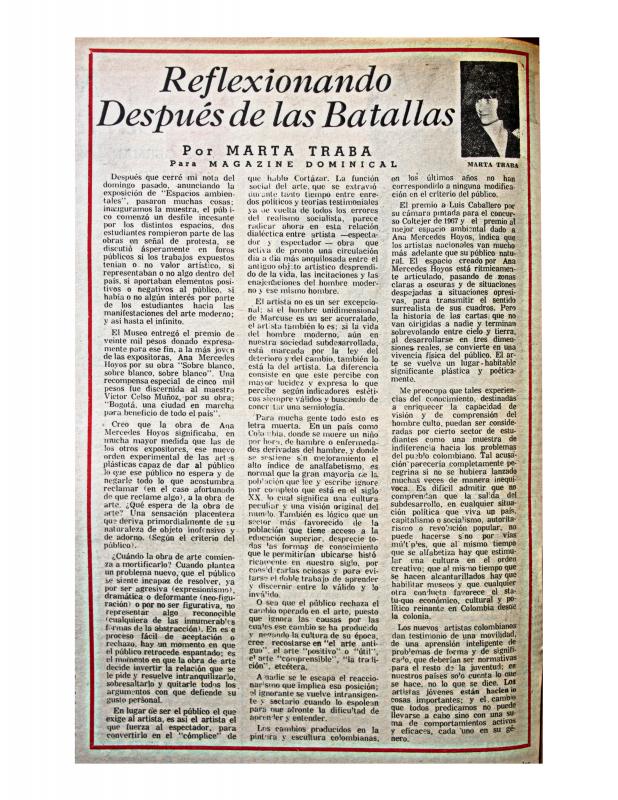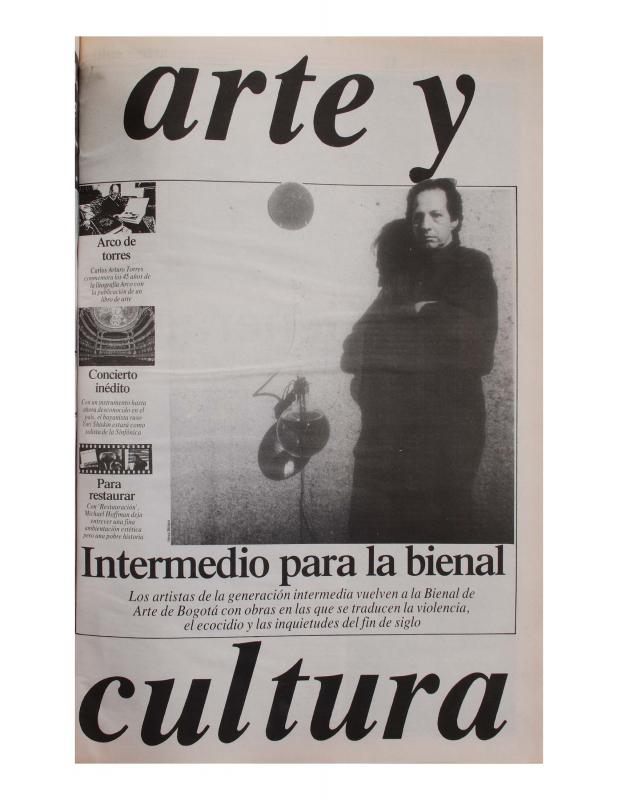“Instalaciones: El espacio tomado” [Installations: The Taken Space] (1991) is an important article because, as it reviews the event, it identifies Instalaciones (1991) as the first Colombian exhibition devoted exclusively to works that rely on installation as a formal and conceptual medium. This is one of the first documents to use the word ‘installation’ to describe practices that had become part of the visual arts in Colombia since the Espacios Ambientales [Environmental Spaces] exhibition in 1963 [see doc. # 868555], and that were called by a variety of names, including “spatial experimentation practices” and “expanded sculpture” until the mid-1990s [see “monólogo con los objetos” [Monologue with Objects], doc. # 1131615]. The acknowledgement of installation as a form of visual art in Colombian art circles demonstrates how those circles embraced the idea of experimenting with space, a trend that was very popular in the 1990s [see “La generación instalada” [The Installed Generation], doc. # 1132436] as a result of changed perceptions concerning the materiality of objects based on their social, political, and historical significance.
A point of interest here is the educational nature of the review of the installations written by Luis Fernando Valencia (b. 1946) based on their formal description, which acknowledges the effectiveness of the works by the Colombian artists Edith Arbeláez (b. 1960), Miguel Ángel Rojas (b. 1942), and Roberto Sarmiento (b. 1965) within the local context, describing their use of materials and the objects’ relationship to the architecture as the essential values in their excellent formal and conceptual resolution. On the other hand, Valencia describes the work by María Fernando Cardoso (b. 1963) as “out of control,” the work by María Teresa Cano (b. 1960) as too theoretical, and the work by Antonio Inginio Caro (b. 1952) as using excessive materials. These were incisive critiques of the lack of spatial awareness and the historical de-contextualization of their works that, despite their severity, affirm the experimental approach taken by artists of the period and see the eclectic nature of the works at the exhibition as a virtue.
Luis Fernando Valencia is a Colombian artist and critic. He is a graduate of the Universidad Nacional de Colombia and the Programa de Maestría en Estética y Filosofía del Arte [Master’s Program in the Aesthetics and Philosophy of Art]. He was awarded a national grant for research in the field of Visual Arts from the Colombian Ministry of Culture. He is currently, in 2010, a professor at the Universidad Nacional at Medellín.



